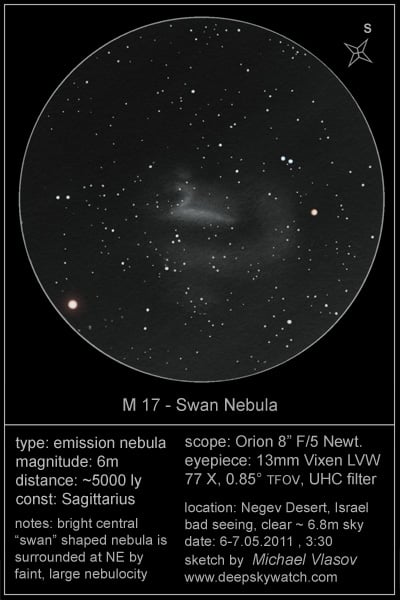Welcome to this month’s update to find out what’s in the night sky for September.
In the Elan Valley International Dark Sky Park, the Milky Way can be seen from slightly west of the southern horizon as darkness falls. It will look at its best from 10pm onwards at the beginning of the month, when astro-darkness begins and continues until 4am in the morning. At the end of the month, astro-darkness starts at 8.50pm and ends at 5.20am, providing eight hours of dark sky, ideal for finding those faint fuzzies.
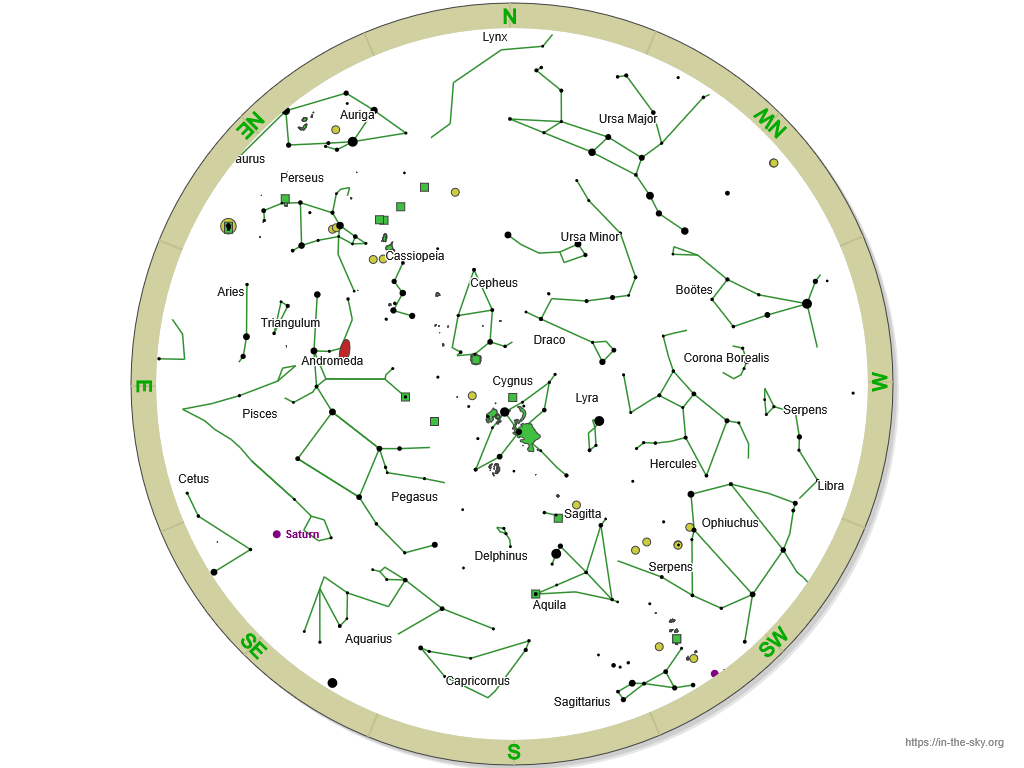
An all-sky view of the constellations from 10pm during September from in-the-sky.org
Low on the south to south-west horizon, you will see the constellation of Sagittarius, resembling a tea pot, with Cygnus, Hercules, Ophiuchus, Aquila and Lyra well-placed above.
In the east, lie the autumn constellations of Pegasus, Andromeda and the ‘w’-shaped Cassiopeia. Westwards, Boötes starts to set with Corona Borealis following.
The Full Moon occurs on 7th September and the New Moon on 21st September.
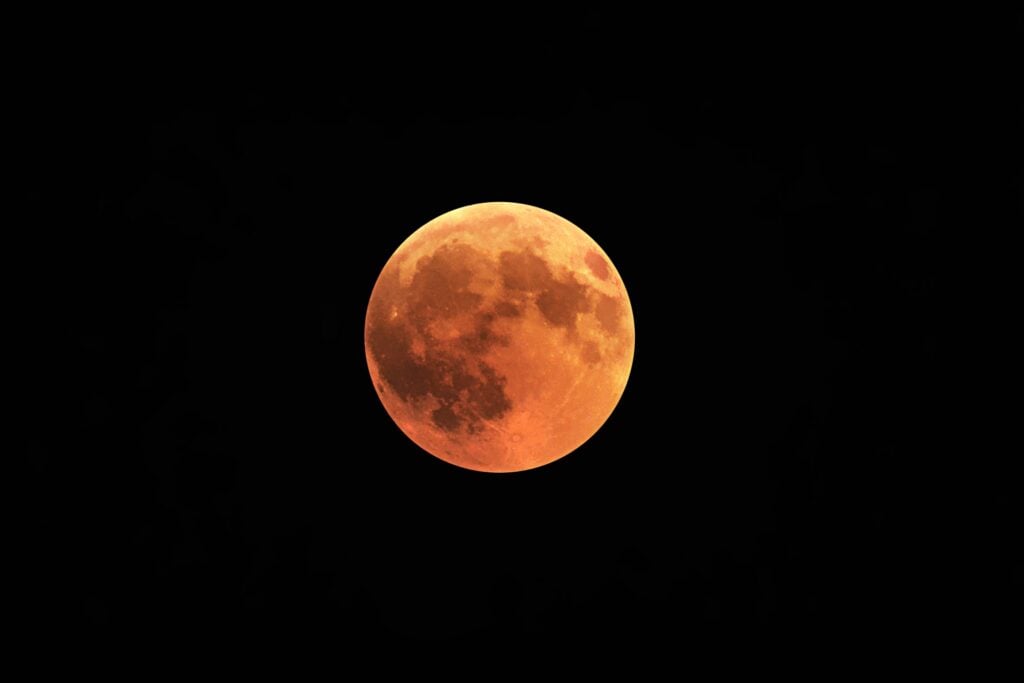
Lunar Eclipse
In the early evening of 7th September, at around 7.50pm, look to the east to watch the Full Moon rise. However, this evening, you’ll notice it looks different – as darkness falls, you will see a shadow over most of its face. That’s because the shadow of the Earth falls across the face of the moon – this is called a lunar eclipse.
When the moon rises, it will be at totality but the sky might be too bright to see the blood red moon – but as darkness falls, you will see most of the Moon’s surface shadowed as it moves out of totality. The Umbra, or the darkest part of the Earth’s shadow will leave the face of the Moon at around 9pm.
Credit: Stellarium

The Planets in September
Jupiter
Jupiter rises at 1.30am at the beginning of the month and midnight at the end.
Saturn
Saturn will rise at 8.45pm at the beginning of the month but will emerge into the night sky, low on the eastern horizon at the end. On 20th September, you can watch the shadow of Titan transit across the face of Saturn – it will start at 5.13am. The rings of Saturn still appear thin and won’t begin to open out until February 2026, due to its 27-degree axial tilt and its orbit around the Sun.
Venus
Venus rises at 3.20am in the north-east at the beginning of the month and at 4.40am at the end.
Neptune
Neptune lies close to Saturn, positioned 10 o’ clock of the ringed planet. On 23rd September it will be in opposition, meaning it’s an ideal time to see it with telescopes and binoculars, being the closest and brightest at the time. It will appear as a defocused blue star and with high magnification through a medium-size telescopes, you may be able to spot its largest moon Titan.
Conjunction of the Moon and Venus
If you are getting up early on 19th September, you may want to look out and see if you can spot the waning crescent Moon just above bright Venus. This conjunction will rise higher into the sky before it is washed out by the rising Sun. Look out for the lovely Earthshine on the darker part of the Moon just before the skies brighten.
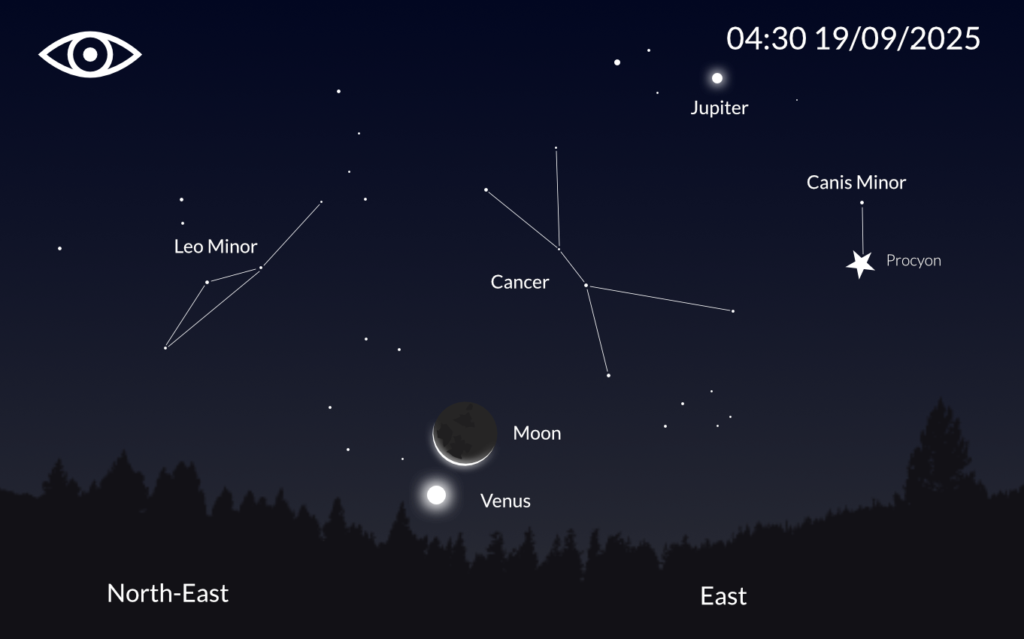
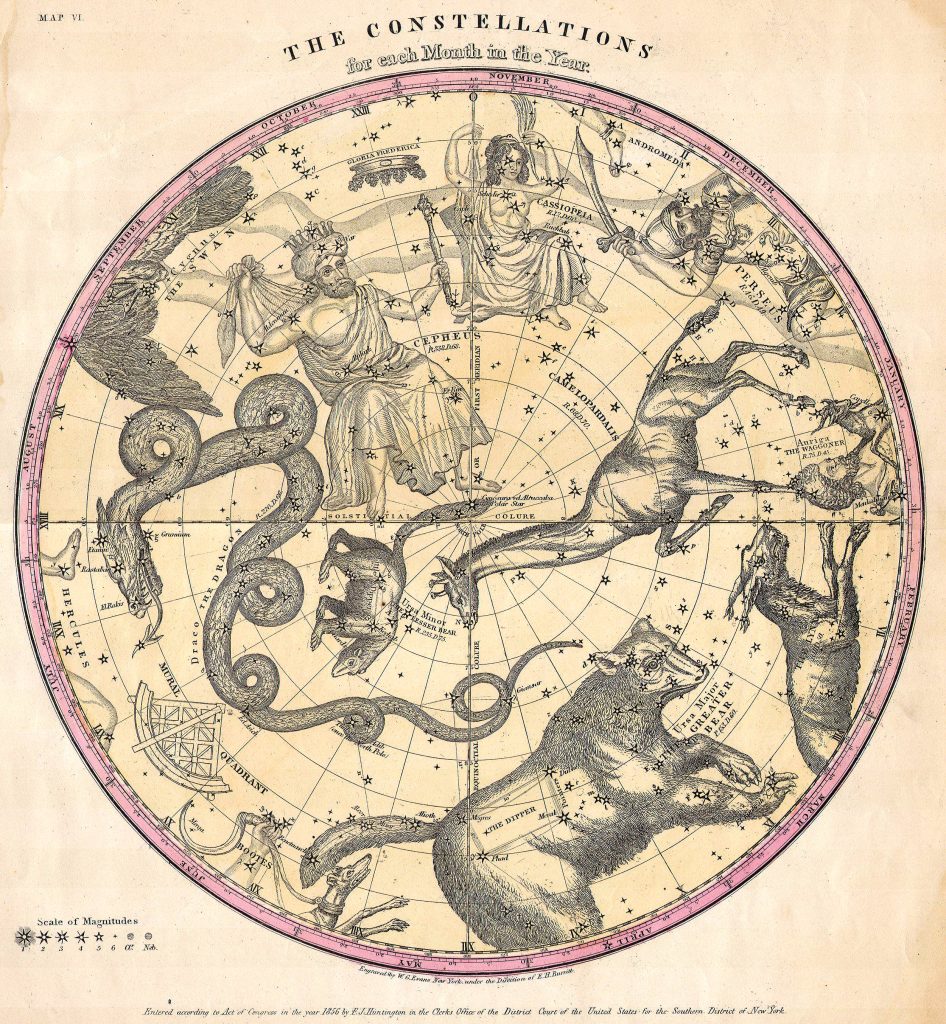
Constellation of the Month
Each month, we will feature a constellation and the mythology behind it.
There are 88 IAU recognised constellations in the night sky and around 36 that are observable in the northern hemisphere. Some of the names of the 88 IAU recognised constellations are several thousands of years old.
With the advent of science and rational thinking, and more of a focus on the observable world, stars are no longer used for the farming calendar, for navigation or conveying social or religious values.
Get outside and see if you can spot these constellations. The best time to see each constellation we feature is around 90 minutes after sunset.

Constellation of the Month – Capricornus
The constellation of Capricornus is mostly lost in the increasing light pollution of more modern times but imagine a time before outdoor lighting when the stars in the constellation were bright enough for it to fire up the imaginations of ancient people?
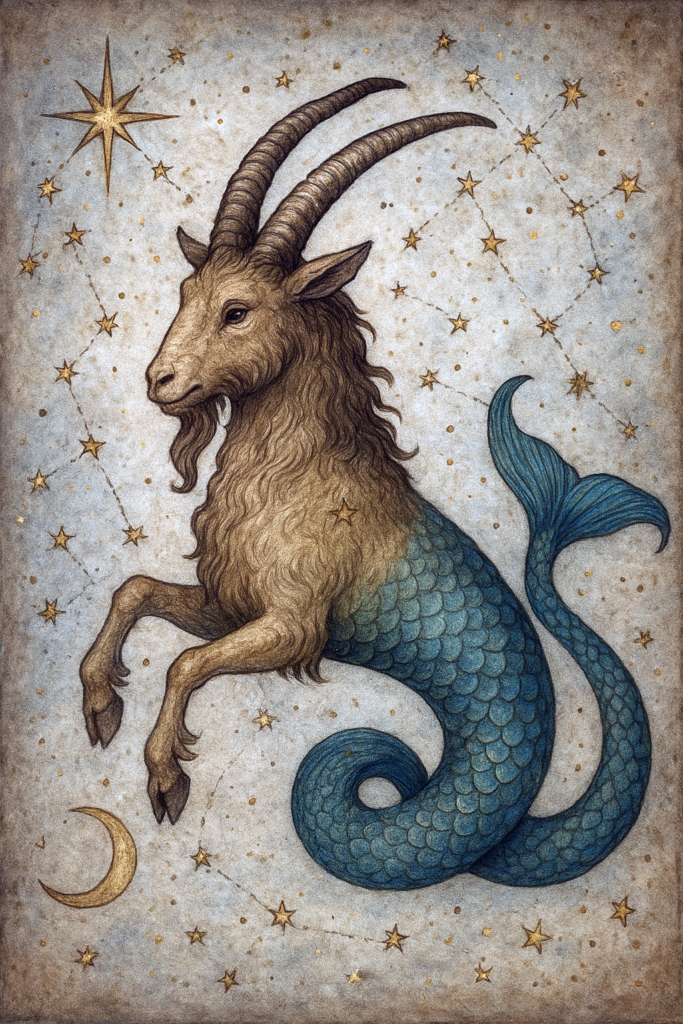
Capricornus has ancient mythology harking right back the ancient Sumerians around 4000 BC, when it was associated with SUHUR-MASH-HA the goat fish, or Enki, the Sumerian god of creation. In later times, Babylonians associated it with their goat-fish god Ea and in Greek mythology, the goat theme continued as they associated the constellation with Amalthea, the goat that suckled Zeus when he was an infant. The constellation was also associated with the Greek god Pan, who was half man-half goat and escaped the clutches of the monster Typhon by turning his legs into a fish’s tail and diving into a river.
Messier 16 (The Eagle Nebula)
Coordinates: RA 18h 18m 48s | Dec -13° 49′ 0″
There is still time this month to study this well-known object, made famous by the Hubble image of the Pillars of Creation. Messier 16 in the constellation of Serpens, comprises two objects: An emission nebula called IC 4703 and open star cluster NGC 6611. Situated 7,000 light years away, it was first discovered by Jean-Phillippe Loys de Chéseaux. This object was born from the remnants of a star that exploded, evolving into a stellar nursery birthing over 8000 stars.
By ESO – http://www.eso.org/public/images/eso0926a/, CC BY 4.0, https://commons.wikimedia.org/w/index.php?curid=7338740

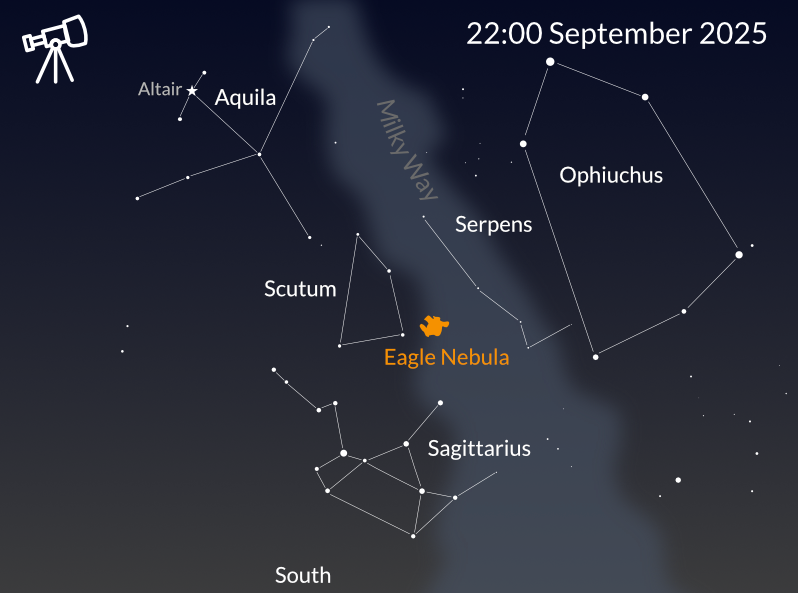
You can use telescopes from three inches of aperture and larger – you may see a “cluster of small stars, mingled with a faint glow”, as quoted by Charles Messier two hundred years ago. A larger telescope in dark skies may reveal more nebula and may even resemble the shape of an eagle.
Messier 17 (The Omega Nebula)
Coordinates: RA 18h 20m 26s | Dec -16° 10′ 36″
Whilst you are in the area, move your telescope over to the neighbouring Messier 17. Known as the Omega or Swan nebula, it is one of the largest star-forming regions in our galaxy.
ESO/INAF-VST/OmegaCAM. Acknowledgement: OmegaCen/Astro-WISE/Kapteyn Institute – http://www.eso.org/public/images/eso1119a/


Situated in the constellation of Sagittarius, it lies 5,500 light years away and contains one of the Milky Way’s youngest star clusters. This powerful, large-scale stellar nursery boasts a pocket of ‘cold gas’ that is around ten times larger than our Solar System!
This object’s star clusters and nebulaic region can be spotted with binoculars but with telescopes of 3 inches of aperture and above you will notice some structure. Telescopes of eight inches of aperture and above may render the distinctive swan shape which looks pleasing. If you have an UHC or 0III filter, pop it onto the end of your eyepiece to reveal more detail.
Credit: Michael Vlasov of www.deepskywatch.com
